Trouble With Swiss Chard: Common Swiss Chard Diseases And Pests


Swiss chard is generally a trouble-free veggie, but this cousin to the beet plant can sometimes fall prey to certain pests and diseases. Read on to learn about common problems with Swiss chard and explore possible solutions that may save the huge, nutritious, flavor-rich leaves.
Fungal Trouble with Swiss Chard
Fungal Swiss chard diseases are the most common culprits responsible when your plants fall ill in the garden. Cercospora Leaf Spot – This fungal disease tends to affect lower leaves first. Cercospora leaf spot is recognized by brownish gray or black spots with reddish purple halos. In humid weather, the leaves may take on a fuzzy appearance due to the silvery gray spores. Downy mildew – Humid conditions or excess moisture may result in downy mildew, a fungal disease that is unsightly but usually not deadly. Downy mildew is recognized by a whitish gray, powdery substance on the leaves. To prevent and treat fungal Swiss chard diseases, leave plenty of space between plants to provide adequate air circulation. You may also need to thin out the Swiss chard leaves. Water at the base of the plant and avoid wetting the leaves. Avoid excess moisture and water only when needed, since Swiss chard generally only requires irrigation during hot, dry weather. If more aggressive treatment is required, use a fungicide containing copper.
Swiss Chard Pests
Occasionally insect pests are to blame when you have Swiss chard problems in the garden. The most common include: Flea beetles – Leaves with a wilted or “shot hole” appearance may be a sign of flea beetles – small, black, bluish, bronze, gray, or sometimes striped pests. Sticky tape is an effective control, or you can apply a commercial spray containing pyrethrins or a homemade spray consisting of 5 parts water, 2 parts rubbing alcohol, and 1 tablespoon (15 ml.) of liquid dish soap. Spinach leafminer – Long, narrow tunnels are usually the work of leafminer larvae – pale white, carrot-shaped maggots. Cover the rows with cheesecloth or fine-mesh netting or apply an insecticidal soap spray or pyrethrin-based spray. Aphids – Aphids, a common garden pest, are easy to treat with insecticidal soap spray, although several applications may be needed. Avoid pesticides, which kill beneficial, aphid-eating insects such as lady beetles, syrphid flies, or green lacewings.
Gardening tips, videos, info and more delivered right to your inbox!
Sign up for the Gardening Know How newsletter today and receive a free download of our most popular eBook "How to Grow Delicious Tomatoes."

A Credentialed Garden Writer, Mary H. Dyer was with Gardening Know How in the very beginning, publishing articles as early as 2007.
-
 Urban Beekeeping Guide: Top Tips For Raising Bees In The City
Urban Beekeeping Guide: Top Tips For Raising Bees In The CityUrban beekeeping can be a rewarding and appreciated pastime, but first be sure it’s legal in your city and learn the ropes of beekeeping.
By Mary Ellen Ellis
-
 2024 Plant Of The Year: Why Experts Say Philodendron Is The “It” Plant Of The Year
2024 Plant Of The Year: Why Experts Say Philodendron Is The “It” Plant Of The YearWe aren’t surprised that philodendron was designated the plant of the year. Versatile, easy-care and lovely, it’s the houseplant of the year 2024!
By Bonnie L. Grant
-
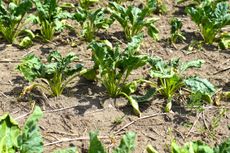 Wilting Swiss Chard Plants: Why Is My Swiss Chard Wilting
Wilting Swiss Chard Plants: Why Is My Swiss Chard WiltingSwiss chard is a great garden plant that's easy to grow and get a lot of success from, but like anything, it's not a guarantee. Sometimes you hit a snag, like wilting. Wilting is actually a really common problem, but it only has a few causes. Learn more here.
By Kristi Waterworth
-
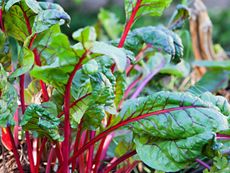 Why Did My Chard Bolt: What To Do With Bolted Chard Plants
Why Did My Chard Bolt: What To Do With Bolted Chard PlantsChard is a great addition to any vegetable garden. Not only is it pretty, but the leaves are tasty, versatile, and very good for you. Grown in the cooler seasons, chard typically won't bolt in summer. If you do have bolting chard plants, all is not lost. Learn more here.
By Mary Ellen Ellis
-
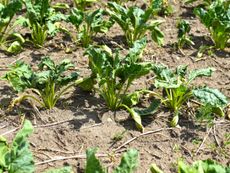 Sick Swiss Chard Plants: Identifying Signs Of Swiss Chard Disease
Sick Swiss Chard Plants: Identifying Signs Of Swiss Chard DiseaseSwiss chard diseases are not numerous, but just one of them can wipe out your crop for the year. But, if you know about these diseases and pests, you can take steps to prevent or treat them and save your harvest. Learn more in this article.
By Mary Ellen Ellis
-
 Cold Hardy Swiss Chard – Can Swiss Chard Grow In Winter
Cold Hardy Swiss Chard – Can Swiss Chard Grow In WinterSwiss chard not only grows well in the hot temperatures of summer, but it also tolerates frost. In fact, chard may actually taste better when it?s grown in cold weather. Click this article for information on caring for Swiss chard in winter.
By Ilana Goldowitz Jimenez
-
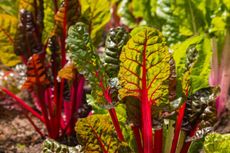 Swiss Chard Fall Planting: When To Plant Chard In Autumn
Swiss Chard Fall Planting: When To Plant Chard In AutumnGrowing Swiss chard in autumn allows you to get a final harvest since it is a cool season plant. In order to successfully get a harvest before the freezing weather comes, you have to know when to plant chard in autumn. This article will help with that.
By Bonnie L. Grant
-
 Swiss Chard Spring Planting: When To Plant Chard In Spring
Swiss Chard Spring Planting: When To Plant Chard In SpringSwiss chard can be planted early in spring or midsummer. Chard in summer can bolt and get bitter, though, so Swiss chard spring planting is one of the better times to sow and harvest this healthy, delicious plant. Learn more about spring planting chard here.
By Bonnie L. Grant
-
 Swiss Chard Seed Care: How To Plant Swiss Chard Seeds
Swiss Chard Seed Care: How To Plant Swiss Chard SeedsChard can be started early in the spring and counted on not to bolt (usually) in the heat of summer. You can learn more about Swiss chard seed care and when to sow Swiss chard seeds in the article that follows. Click here for more information.
By Liz Baessler
-
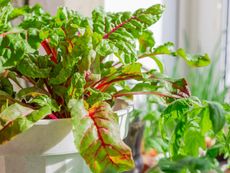 Swiss Chard Care In Pots – How To Grow Swiss Chard In Containers
Swiss Chard Care In Pots – How To Grow Swiss Chard In ContainersSwiss chard is not only delicious and nutritious but is also ornamental. As such, planting Swiss chard in containers does double duty; it provides a showy backdrop for other plants and flowers and makes for easy picking. Click here to find out how to grow Swiss chard in containers.
By Amy Grant